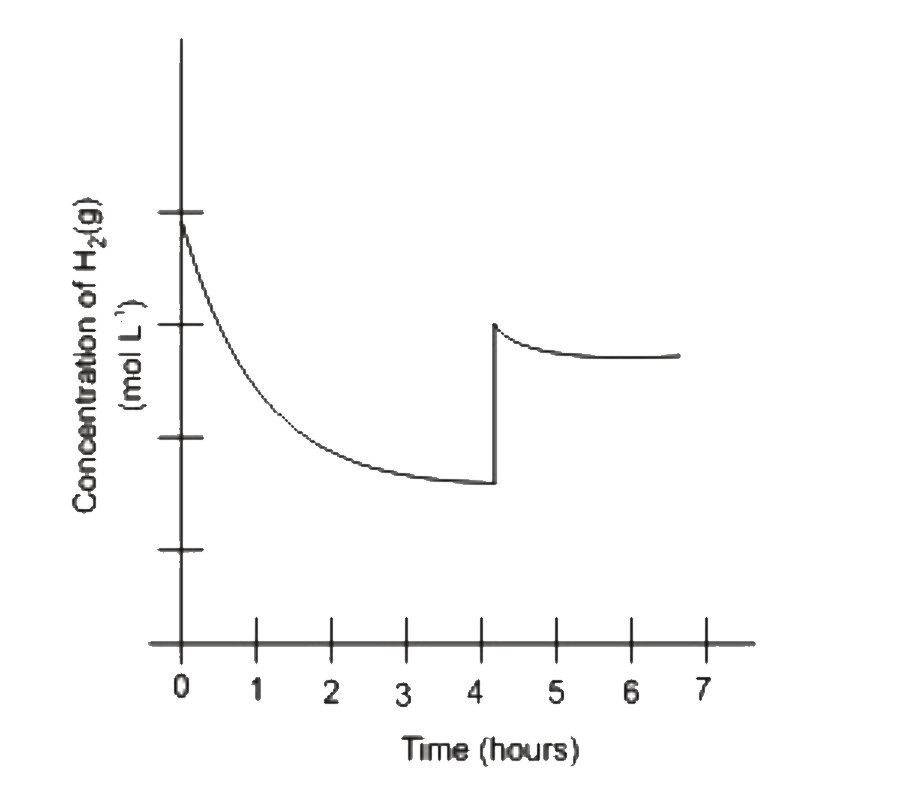The reaction between phosphorus (P4) and hydrogen (H2) can result in the formation of phosphine (PH3) as shown :
P4(s)+6H2(g)⇔4PH3(g)
The graph shows the change in concentration of hydrogen for this reaction in which the system was distrubed after four hours.

Which of the following could explain the change in hydrogen concentration at time = 4 hours?
The volume on the reaction vessel was decreased
A catalyst was added
The pressure on the reaction mixture was decreased
More phosphorus was added
The correct Answer is:A
Step by step video & image solution for The reaction between phosphorus (P_(4)) and hydrogen (H_(2)) can result in the formation of phosphine (PH_(3)) as shown : P_(4)(s)+6H_(2)(g)hArr 4PH_(3)(g) The graph shows the change in concentration of hydrogen for this reaction in which the system was distrubed after four hours. Which of the following could explain the change in hydrogen concentration at time = 4 hours? by Chemistry experts to help you in doubts & scoring excellent marks in Class 12 exams.
Updated on:21/07/2023Similar Questions
Knowledge Check
Assertion : For the reaction : N2(g)+3H2(g)⇔2NH3(g),Kp=Kc
Reason : Concentration of gaseous reactants and products is taken as unity.AIf both assertion and reason are true and reason is the correct explanation of assertion.BIf both assertion and reason are true but reason is not the correct explanation of assertion.CIf assertion is true but reason is false.DIf both assertion and reason are false.
For the reaction N2(g)+3H2(g)⇔2NH3(g),ΔH=−93.6kJmol−1. The concentration of H2 at equilibrium will increase if
View SolutionFor 4NH3(g)+5O2(g)⇔4NO(g)+6H2O(g), write the expression of Kc
View SolutionFor the reaction
N2+3H2→2NH3 The rate of change of concentration for hydrogen is 0.3×10−4Ms−1 The rate of change of concentration of ammonia is :
View SolutionFor the reaction
N2+3H2→2NH3 The rate of change of concentration for hydrogen is −0.3×10−4Ms−1 The rate of change of concentration of ammonia is :
View SolutionWhat is the unit of Kp for the reaction ?
CS2(g)+4H2(g)⇔CH4(g)+2H2S(g)
View SolutionAt 527∘C, the reaction given below hasKc=4
NH3(g)⇔12N2(g)+32H2(g)
what is the Kp for the reaction ?
N2(g)+3H2(g)⇔2NH3(g)
View SolutionConsider the following equilibrium
N2O4(g)⇔2NO2(g)
Then the select the correct graph , which shows the variation in concentrations of N2O4 against concentrations of NO2:
View Solution
